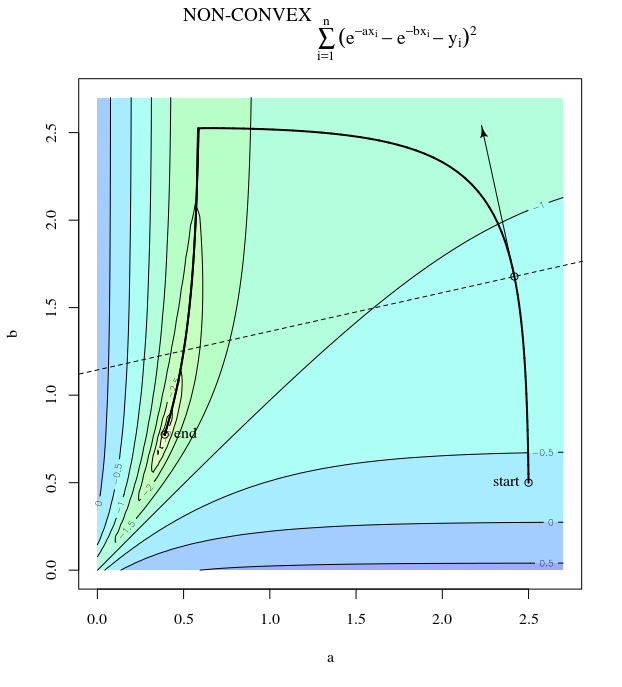Steepest descent can be inefficient even if the objective function is strongly convex.
Ordinary gradient descent
I mean "inefficient" in the sense that steepest descent can take steps that oscillate wildly away from the optimum, even if the function is strongly convex or even quadratic.
Consider $f(x)=x_1^2 + 25x_2^2$. This is convex because it is a quadratic with positive coefficients. By inspection, we can see that it has a global minimum at $x=[0,0]^\top$. It has gradient
$$
\nabla f(x)=
\begin{bmatrix}
2x_1 \\
50x_2
\end{bmatrix}
$$
With a learning rate of $\alpha=0.035$, and initial guess $x^{(0)}=[0.5, 0.5]^\top,$ we have the gradient update
$$
x^{(1)} =x^{(0)}-\alpha \nabla f\left(x^{(0)}\right)
$$
which exhibits this wildly oscillating progress towards the minimum.

Indeed, the angle $\theta$ formed between $(x^{(i)}, x^*)$ and $(x^{(i)}, x^{(i+1)})$ only gradually decays to 0. What this means is that the direction of the update is sometimes wrong -- at most, it is wrong by almost 68 degrees -- even though the algorithm is converging and working correctly.

Each step is wildly oscillating because the function is much steeper in the $x_2$ direction than the $x_1$ direction. Because of this fact, we can infer that the gradient is not always, or even usually, pointing toward the minimum. This is a general property of gradient descent when the eigenvalues of the Hessian $\nabla^2 f(x)$ are on dissimilar scales. Progress is slow in directions corresponding to the eigenvectors with the smallest corresponding eigenvalues, and fastest in the directions with the largest eigenvalues. It is this property, in combination with the choice of learning rate, that determines how quickly gradient descent progresses.
The direct path to the minimum would be to move "diagonally" instead of in this fashion which is strongly dominated by vertical oscillations. However, gradient descent only has information about local steepness, so it "doesn't know" that strategy would be more efficient, and it is subject to the vagaries of the Hessian having eigenvalues on different scales.
Stochastic gradient descent
SGD has the same properties, with the exception that the updates are noisy, implying that the contour surface looks different from one iteration to the next, and therefore the gradients are also different. This implies that the angle between the direction of the gradient step and the optimum will also have noise - just imagine the same plots with some jitter.
More information:
This answer borrows this example and figure from Neural Networks Design (2nd Ed.) Chapter 9 by Martin T. Hagan, Howard B. Demuth, Mark Hudson Beale, Orlando De Jesús.







